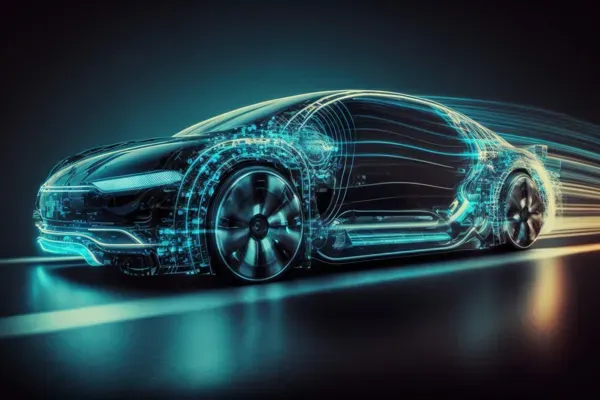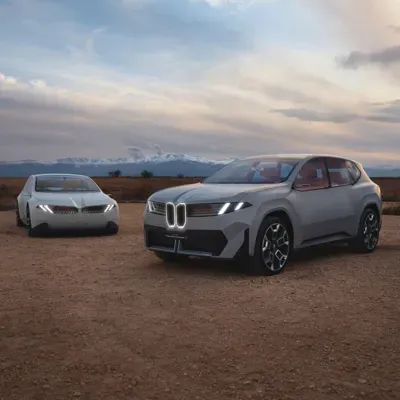AI car design is transforming the future of the automotive industry, providing a groundbreaking blend of technology and artistry. As experts like Gorden Wagener, Mercedes design chief, voice their concerns about the limitations of artificial intelligence in car design, the quest for innovative solutions continues. With the surge of AI-generated car designs flooding social media, many within the automotive community question whether these outputs genuinely reflect the brands’ identities or merely add to the clutter. Wagener emphasizes the struggle of designers to stand out amidst a sea of uninspired visuals, which complicates traditional design processes further. While the integration of AI in automotive design faces challenges, the dialogue around its potential applications drives the industry to explore more effective collaborations between human creativity and machine learning.
The realm of automotive design is entering a new era through the integration of intelligent technologies, commonly referred to as innovative vehicle design. This modern approach harnesses the capabilities of machine learning, presenting unique opportunities and challenges for designers like Gorden Wagener at Mercedes-Benz. As the influx of digitally crafted automotive concepts saturates online platforms, the significance of authentic design is becoming even more pronounced. The friction between traditional artistry and AI-generated models reflects broader concerns regarding originality and brand representation. Despite these advancements, many believe that the essence of human creativity remains irreplaceable, prompting ongoing discussions about the future of design in the automotive landscape.
The Role of AI in Modern Car Design
Artificial intelligence has gradually started to shape various industries, and the automotive sector is no exception. In the realm of car design, AI-driven tools are implemented for various tasks, such as generating design concepts and optimizing vehicle performance. However, despite its potential, leading figures like Gorden Wagener from Mercedes-Benz have expressed skepticism about AI’s actual impact and reliability in creating visually appealing and brand-specific designs.
Wagener’s candid assessment that ‘99% of AI Car Design is sh–’ reflects a growing sentiment among traditional designers. They feel that while AI can assist in streamlining tasks, it falls short in producing unique, high-quality designs that resonate with consumers. The automotive industry faces challenges with designs becoming homogenized and less inspiring due to the influx of AI-generated outputs. This pressing concern highlights the importance of balancing innovation with traditional design principles.
Gorden Wagener’s Perspective on AI in Automotive Design
Gorden Wagener, the Chief Design Officer at Mercedes, has been navigating the challenges presented by AI-generated designs for several years. During discussions at the IAA Mobility show, he articulated his frustrations with the overwhelming presence of unoriginal and uninspiring AI designs flooding social media platforms. This saturation dilutes the appeal of genuine automotive artistry and creates a scenario where designers like Wagener struggle to innovate and push the boundaries of vehicle design.
Wagener’s unique focus on maintaining the ‘spectacular aspect’ of designs is paramount in a landscape where digital creations often lack soul and specificity. He believes that significant automotive designs should elicit emotion and stand out in a sea of the visually mundane. His insights emphasize the fine line designers must walk between embracing technological advancements like artificial intelligence in car design and preserving the artistic integrity that defines the essence of the automotive experience.
Challenges Faced by the Automotive Industry
The automotive industry is currently grappling with what can be seen as a design identity crisis due to the rapid proliferation of AI-generated designs. The challenge lies in the need to differentiate real, innovative designs from a plethora of generic, AI-produced options that dilute brand identity. Wagener points out that when consumers are bombarded with fantastical yet forgettable designs, it becomes increasingly difficult for traditional car manufacturers to push the envelope and present compelling new concepts.
In addition to the issue of brand differentiation, automakers must also contend with evolving consumer expectations. As the industry shifts toward electrification and sustainable design, the pressure to create striking, memorable vehicles that reflect these values mounts. Innovative minds in the industry are tasked with overcoming these hurdles while staying true to their brands, which reinforces the idea that artificial intelligence, though helpful, should be approached with caution and a critical mindset.
The Uniqueness of Human Creativity in Car Design
Despite advancements in artificial intelligence, the importance of human creativity in car design remains irreplaceable. While AI can process vast amounts of data and generate designs based on existing templates, it lacks the intrinsic ability for originality and emotional depth that human designers bring to the table. Wagener acknowledges that designers are the heart of the creative process, and their unique perspectives inform decisions that resonate with consumers on a deeper level.
The capabilities of AI might improve over time, but the essence of design—emphasizing storytelling, identity, and brand legacy—will always require a human touch. As we witness a growing reliance on AI tools, it is crucial for designers to harness these technologies while ensuring that their signature creativity influences every aspect of the design process. This balance could redefine the future of automotive design, offering a harmonious blend of tradition and technology.
Innovation vs. Automation: Finding Balance in Design
In the conversation surrounding AI and car design, the key challenge is to find a balance between innovation and automation. Mercedes’ use of AI serves as a backdrop to examine how automated techniques can streamline specific aspects of design without compromising artistic vision. Wagener’s remarks serve as a reminder that while automation can provide efficiency, it should not replace the passion and critical thinking that define true automotive artistry.
The automotive design community must grapple with the implications of relying too heavily on AI-generated outputs. As Wagener highlights, the exposure to exaggerated AI designs can dull audiences’ appreciation for genuine groundbreaking concepts. Thus, it becomes essential to channel innovation in a manner that complements, rather than replaces, the artistic intentions behind each vehicle, fostering an appreciation for the craftsmanship involved.
Mercedes-Benz’s Approach to Heritage and Future Design
Amidst discussions about AI’s limitations and the proliferation of uninspired designs, Mercedes-Benz is positioning itself as a champion of heritage in automotive design. With recent models like the electric GLC, the brand’s commitment to distinctive and timeless designs is evident. By focusing on fundamental design elements rather than falling into the AI trap of exaggerated features, Mercedes maintains its reputation for sophistication and luxury.
The balance of heritage and innovation presents an exciting framework for the future of Mercedes design. Gorden Wagener’s approach emphasizes creating vehicles that echo the brand’s storied past while embracing modernity and sustainability. This commitment not only sets Mercedes apart in a crowded market but also challenges the industry to rethink the role of AI in enhancing, rather than replacing, the artistry present in thoughtful car design.
The Emotional Impact of Automotive Design
Automotive design goes beyond mere aesthetics; it connects deeply with human emotions. Wagener stresses that successful designs evoke feelings and resonate with consumers’ aspirations. The challenge with AI-generated car designs is their lack of emotional authenticity, leading to a disconnect with audiences. Designers pour their experiences, values, and visions into their creations, which is something AI simply cannot replicate.
By focusing on the emotional aspects of automotive design, brands like Mercedes can continue to forge strong connections with their audience. The automotive industry must prioritize emotional engagement in design processes, balancing efficiency offered by AI while simultaneously championing skilled craftsmanship. In doing so, it can uphold a legacy of meaningful design that elevates the driving experience.
Future Prospects: AI’s Role in Evolving Car Designs
As we look toward the future of automotive design, the intersection of AI and human creativity presents exciting possibilities. While skepticism about AI’s present capabilities appears justified, it’s crucial to remain open to its evolution. Gorden Wagener’s insights draw attention to the importance of exploring how AI can assist designers, especially in areas where technology can enhance collaborative processes without stifling creativity.
The automotive industry stands on the brink of a technological revolution, where AI could play a pivotal role in shaping the next generation of vehicles. By harnessing the strengths of AI while prioritizing human intuition and artistic sensibility, brands can navigate this transition successfully. Moving forward, designers must embrace AI as a tool, striving to create future vehicles that inspire and excite without losing the essence of what makes automotive design fundamentally human.
The Need for Critical Assessment of AI in Car Design
Despite the advantages that artificial intelligence can provide, the automotive industry must approach its integration with caution. Gorden Wagener emphasizes the need for a critical assessment of AI-generated designs, as they often lead to the production of uninspired vehicles that do not reflect the brand’s identity. This critical mindset will be essential to ensuring that the applications of AI in car design do not diminish the quality of creativity and the emotional connections these vehicles forge with their drivers.
Continued scrutiny and evaluation of AI’s role in car design will foster a constructive dialogue about the future of automotive creativity. The concerns raised by industry leaders, including Wagener, highlight a vital need for intelligent discourse about the relationship between AI and traditional design methodologies. Recognizing the limitations of AI while celebrating the distinct capabilities of human designers may lead to a renaissance in automotive design.
Frequently Asked Questions
What role does AI play in car design according to Gorden Wagener?
Gorden Wagener, the Chief Design Officer at Mercedes-Benz, admits that AI has been utilized in car design, but he believes its current role is limited. He states that AI-generated designs often produce undesirable results, with 99% of outputs being considered ineffective or unattractive. While AI can assist in creating backgrounds, it lacks the creativity and originality needed for effective automotive design.
How does Gorden Wagener feel about AI-generated car designs?
Gorden Wagener expresses frustration with the prevalence of AI-generated car designs, stating that the majority lack quality and creativity. He feels that these uninspiring designs complicate the work of professional designers by overwhelming them with poor-quality visuals, thus diluting the impact of genuine, innovative automotive concepts.
What challenges does the automotive industry face with AI in car design?
The automotive industry faces several challenges with AI in car design, primarily due to the lack of originality in AI-generated outputs as highlighted by Gorden Wagener. With an oversaturation of fantastical AI designs on social media, it becomes increasingly difficult for automotive companies to develop show cars that stand out, as audiences become desensitized to exaggerated visuals.
Can AI create original car designs that capture the brand’s essence?
According to Gorden Wagener, AI currently struggles to create original car designs that truly capture a brand’s essence. He believes that while AI can generate designs, these often fail to reflect the unique attributes and identity of the automotive brand, limiting its beneficial applications in car design.
Why does Gorden Wagener prefer traditional design methods over AI in car design?
Gorden Wagener prefers traditional design methods over AI in car design because he believes they yield more compelling and meaningful results. He asserts that AI’s inability to produce original ideas makes it difficult to achieve the creative vision necessary for standout automotive designs, which is critical in a competitive market.
| Key Point | Details |
|---|---|
| AI’s Current Role in Design | Mercedes utilizes AI for design, but results are deemed unsatisfactory by Gorden Wagener. |
| Quality of AI Outputs | Wagener claims that 99% of AI-generated designs are unattractive and unoriginal. |
| Loss of Originality | Wagener notes that AI designs saturate the market, making it harder for unique vehicles to stand out. |
| Heritage in Design | Mercedes is focusing more on its design heritage amidst the influx of AI-generated graphics. |
| Skepticism Towards AI | Wagener expresses doubt that AI can ever achieve true originality in car design. |
Summary
AI car design is currently facing significant challenges according to Mercedes’ Chief Design Officer, Gorden Wagener. He emphasizes that, while artificial intelligence can assist in certain aspects of design, the overwhelming majority of outputs are not viable for real-world application. In an industry that thrives on originality and uniqueness, the saturation of uninspired AI-generated designs is diminishing the spectacular nature of upcoming vehicle concepts. As a result, companies like Mercedes are leaning on their rich design heritage to stand out in a rapidly evolving automotive landscape.



























